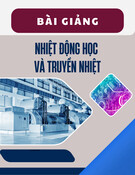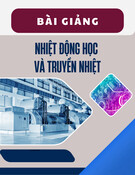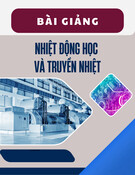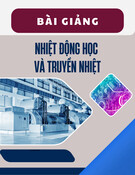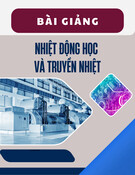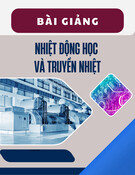
REVIEW ARTICLE
Reactor performance, system reliability, instrumentation
and control
Andreas Schumm
1,*
, Madalina Rabung
2
, Gregory Marque
1
, and Jary Hamalainen
3
1
EDF Labs Les Renardières, EDF R&D, Avenue des Renardières, 77818 Moret sur Loing, France
2
Fraunhofer IZFP, Campus E3.1, 66123 Saarbrücken, Germany
3
VTT Technical Research Centre of Finland, Vuorimiehentie 3, Espoo, Finland
Received: 12 March 2019 / Accepted: 4 June 2019
Abstract. We present a cross-cutting review of three on-going Horizon 2020 projects (ADVISE, NOMAD,
TEAM CABLES) and one already finished FP7 project (HARMONICS), which address the reliability of safety-
relevant components and systems in nuclear power plants, with a scope ranging from the pressure vessel and
primary loop to safety-critical software systems and electrical cables. The paper discusses scientific challenges
faced in the beginning and achievements made throughout the projects, including the industrial impact and
lessons learned. Two particular aspects highlighted concern the way the projects sought contact with end users,
and the balance between industrial and academic partners. The paper concludes with an outlook on follow-up
issues related to the long term operation of nuclear power plants.
1 Introduction
The effective maintenance of nuclear power plants is
essential for their safe operation. Maintenance ensures that
the level of reliability and effectiveness of all safety-
relevant components and systems remains in accordance
with design assumptions, and also that it is not adversely
affected during operation [1].
Scheduling preventive and corrective maintenance
operations requires an understanding of ageing mecha-
nisms for the different components and materials used in
plants, as well as a thorough and quantitative assessment of
the health and reliability of safety-relevant components.
The projects addressed in this paper attempt to answer
to this challenge, and cover a wide range of “safety relevant
components and systems”. ADVISE [2] and NOMAD [3]
aim to improve quantitative Non-destructive Evaluation
Techniques (NDE) to components in the primary loop
(restricted to cladded components in NOMAD and to
materials with complex microstructure in ADVISE) to
obtain a quantitative assessment of the structural integrity
of the components at hand. TEAM CABLES [4] aims to
improve the understanding of ageing mechanisms on cables
used in plants (specifically to the polymers used in the
insulation), to model this ageing, and to devise NDE
and monitoring techniques for the health assessment.
HARMONICS [5], the only project of the four already
terminated, extends this approach to the software of
computer-based I&C safety systems.
This review is intended to be voluntarily cross-cutting,
focusing on achievements, challenges and impacts of these
projects rather than giving exhaustive descriptions, with
an aim to identify potential follow-ups to cover the terrain
not dealt with throughout these projects. We, therefore,
restrict the project descriptions to brief portraits in the
following paragraphs (Tab. 1).
1.1 ADVISE
ADVISE is an acronym for “advanced inspection of
complex structured materials”, and aims to advance the
ultrasonic inspection of complex structured materials, for
which conventional ultrasonic techniques suffer from
severe performance limitations due to the micro and/or
macro-structure. The most prominent examples of materi-
als concerned are welds and cast austenitic stainless steel.
The key idea of the project is to use a-priori, model-
predicted and in-situ obtained information about the
structure to be inspected in computer modelling in all
stages of the inspection to obtain a step change improve-
ment in terms of inspectable depth, defect detection and
characterisation accuracy:
–during the inspection design, model-assisted optimisa-
tion of customised transducers and delay laws aims to
specify the most appropriate inspection approach;
*e-mail: andreas.schumm@edf.fr
EPJ Nuclear Sci. Technol. 6, 43 (2020)
©A. Schumm et al., published by EDP Sciences, 2020
https://doi.org/10.1051/epjn/2019017
Nuclear
Sciences
& Technologies
Available online at:
https://www.epj-n.org
This is an Open Access article distributed under the terms of the Creative Commons Attribution License (http://creativecommons.org/licenses/by/4.0),
which permits unrestricted use, distribution, and reproduction in any medium, provided the original work is properly cited.

–during the acquisition, in-situ characterisation techni-
ques aim to acquire specific information about the
structure to be inspected;
–after the acquisition, model-assisted diagnostic tools
exploit the entire available information in adaptive
imaging and inversion techniques.
The project admits that no single magic bullet exists,
and that a number of incremental improvements need to be
combined. The consortium includes industrial stakeholder,
academics with specific background for the R&D tasks, and
an equipment manufacturer, as well as a distributor for
rapid dissemination (Fig. 1).
1.2 NOMAD
NOMAD means “Nondestructive Evaluation (NDE)
System for the Inspection of Operation-Induced Material
Degradation in Nuclear Power Plants”and aims to
develop and demonstrate an NDE approach for the
quantification of neutron radiation-induced embrittle-
ment in cladded reactor pressure vessel materials.
Additionally, NOMAD focuses on the validation of the
existing surveillance programs with respect to the actual
vessel under LTO conditions, in terms of equivalence of
radiation damage accumulation. These topics are of
particular importance in terms of lifetime extension of
existing operating reactors, the reactor pressure vessel
(RPV) being considered the only part of the primary loop,
which cannot be replaced [7,8].
A multiple scale of samples from Charpy samples, over
non-cladded blocks to realistic cladded blocks, made from
representative steels of eastern and western RPV design
are made available in various irradiated conditions
representing different realistic degradation levels. Multiple
NDE technologies, including micromagnetic, electrical and
ultrasound-based methods, are developed and applied to
these multiple scales of samples in neutron-irradiated
condition. The results are to be compared and combined
across methods, samples and degradation parameters in
order to define a hybrid approach and finally demonstrate
it in a modular way.
For the first time, a systematic study in terms of
correlation of microstructure, mechanical properties,
neutron irradiation conditions and non-destructive prop-
erties is carried out on a well-characterized set of samples.
The aim is not only to extend the existing database, but
also to include issues such as reliability and uncertainties
of the techniques as well as effects caused by material
heterogeneity. Furthermore, the capabilities of the indi-
vidual NDE techniques and, as result, the performance of
the NDE tool regarding the future application in the field
will be determined. The NOMAD consortium consists of
partners with complementary expertise having common
interest in the project goals: academic partners for
identifying the problems in details and developing the
Table 1. Key figures for concerned projects.
Project Duration Funding Lead Partners Framework
ADVISE 09/17–09/21 4,2 ME EDF 11 H2020
NOMAD 06/17–12/21 4,9 ME Fraunhofer 10 H2020
TEAM CABLES 09/17–12/21 4,2 ME EDF 13 H2020
HARMONICS 01/11–01/15 1,0 ME VTT 5 FP7
Fig. 1. ADVISE work plan.
2 A. Schumm et al.: EPJ Nuclear Sci. Technol. 6, 43 (2020)

suitable measurement methods, industrial partners guid-
ing the developments by representing the market-needs
and also industrial partners, end user group or external
scientific advisory board for the validation of the needs but
the solutions as well (Fig. 2).
1.3 TEAM CABLES
TEAM CABLES focuses on European tools and method-
ologies for an efficient ageing management of nuclear power
plant cables and addresses the challenge of long term
operation for cables more precisely, their polymer
insulation, which is subjected to aging. The sheer amount
of cables in a NPP (about 1500 km for one nuclear unit, or
twice as much for a typical 2 reactor plant) makes the
replacement of cables economically unfeasible, which
requires for accurate predictive models for their safe
lifetime, as well as for generic tools and methods for on-site
monitoring.
TEAM CABLES will develop a novel multiscale
approach for more precise estimation of the cable lifetime.
Cable lifetime is governed by polymer layers lifetime. A
large part of the project is so dedicated to polymer science.
The project will analyse the effects of irradiation and
temperatures on polymers from micro- to macroscale level,
in order to develop multiscale models of ageing. Ageing in
normal operation conditions and accidental conditions will
be addressed. The unique multi-scale and kinetic models
will be integrated into a numerical tool, which will be
based on the fusion of a currently used European cable
management instrument with a polymer ageing modelling
tool. In parallel, criteria and protocols will be proposed for
onsite use of non-destructive testing techniques.
The program combines highly scientific work packages
for the actual polymer ageing kinetics models with
experimental work packages to obtain data throughout
accelerated ageing. The consortium is comprised of stake-
holders, cable manufacturers, academic partners with
specific experience in polymer aging kinetics modelling,
as well as applied institutes for the experimental and NDE
aspects (Fig. 3).
1.4 HARMONICS
HARMONICS (abbreviation for Harmonised Assessment
of Reliability of MOdern Nuclear I&C Software) recog-
nized that software can in general not be proven to be
completely defect-free, and addressed the issue of
reliability and safety of the computer-based systems that
implement safety functions in nuclear power plants.
HARMONICS had the objective to ensure well founded
and up-to-date methods and data for assessing software of
computer-based safety systems in Gen-II and Gen-III
NPPs throughout the entire system lifecycle. It has taken
advantage of the aforementioned advances to propose
systematic and consistent, yet realistic and practical
approaches for software assessment.
The project addressed three key issues: software
verification & validation (V&V), software safety justifica-
tion, and quantitative evaluation of software reliability.
The term “software reliability”is used as a shortcut for
“software-related aspects of system reliability”. The focus
was mainly on I&C systems performing category A
functions (as defined by IEC 61226), which is the highest
safety category in NPP. To support research activities on
these three main issues, the project investigated and
developed theories, techniques and tools as necessary. In
addition, the feasibility of the developed approaches was
experimentedanddemonstratedwithselectedcaseexamples
provided by the project participants and the end user group.
Related to the IAEA Report on Dependability Assess-
ment of Software for Safety I&C Systems at NPPs started
in May 2014, major results from the HARMONICS project
were proposed (approaches to improve confidence in
functional requirements, role of formal software verifica-
tion, safety justification framework).
Fig. 2. NOMAD work plan.
A. Schumm et al.: EPJ Nuclear Sci. Technol. 6, 43 (2020) 3

The consortium regrouped utilities and safety authori-
ties and consultants, led by a multidisciplinary research
organisation. As a particularity, HARMONICS had a
parallel project on reliability and V&V of nuclear safety
I&C software in China (Fig. 4).
2 Challenges, achievements, impact
2.1 Scientific challenges and achievements
With three out of four projects running in their second year
and only one terminated, it is sensible to discuss challenges
and achievements at the same time.
The principal scientific challenge faced by HARMON-
ICS was to formally justify high to very high reliability
figures for a given piece of software: it is extremely difficult
to claim and formally demonstrate failure probabilities
lower than 1E-4, and moreover, no universally accepted
approach for the quantitative evaluation of software
reliability exists. HARMONICS answered this challenge
with a safety justification framework for the software of
systems implementing category A nuclear safety functions.
HARMONICS created scientific deliverables covering
formal verification methods, a safety justification frame-
work, a proposed approach to quantify software reliability,
and a method on complexity analysis. A comprehensive list
of publications with summaries can be found on the
project’s website.
ADVISE, NOMAD and TEAM CABLES are funded in
the frame of the section “Continually improving safety and
reliability of Generation II and III reactors”of the Euratom
Program 2016. The main scientific challenge of all these
projects is to obtain a deeper understanding of operation-
induced degradation mechanisms. This will be carried out
by applying innovative NDE methods in ADVISE and
NOMAD, and will be used to develop NDE methods in
TEAM CABLES.
ADVISE established the scientific challenges early on in
the project in the first technical delivery in the form of a
state-of-the-art report. The project considers this as a good
means to take a snapshot at the start of the project, which
shall be used at the end of the project to measure the
achievements. A major challenge for the project concerns
the experimental non-destructive (as opposed to destruc-
tive laboratory analysis) characterization of material
microstructure in situ, the prediction of micro- and
macrostructures in weld models, and the ability of fast
ultrasound simulation models to take material microstruc-
ture into account.
NOMAD’s main scientific challenge is the quantifica-
tion of neutron irradiation-induced embrittlement of RPV
steels independent on the austenitic cladding, combining
information from multiple non-destructive evaluation
techniques. To this, signals originated from the cladding
Fig. 4. HARMONICS work plan.
Fig. 3. TEAM CABLES work plan.
4 A. Schumm et al.: EPJ Nuclear Sci. Technol. 6, 43 (2020)

must be separated from the signals obtained from the base
material. Another challenge is to produce irradiated
cladded blocks similar to the real operating RPV and
after that to compare the non-destructively detected
material properties with those detected on irradiated
Charpy samples. To this, NDE methods based on different
physical principles have been developed and successfully
tested on neutron-irradiated Charpy samples and thermal-
ly aged cladded blocks.
TEAM CABLES faces multiple scientific challenges
related to polymer ageing, which are in part covered by three
PhD collaborations with academic partners. The overall
ambition of TEAM CABLES is to allow NPP operators to
improve their capacity to safely manage the lifetime of cables
and thereby contribute to ensuring the lifetime extension of
NPPs to 60–80 yr. To achieve this, a radically new way to
predict the lifetime of cables (in terms of mechanical,
physical and electrical parameters) is developed, using much
more precise information about material composition and
more relevant methods for analysing the data based on
multi-scale studies of the materials.
2.2 Industrial impact
Shortly before the end of the HARMONICS project, the
IAEA had started the development of a technical report
on the Dependability Assessment of Software for Safety
I&C Systems at NPPs. Several members of the HAR-
MONICS project were part of the expert team that
drafted the report, and some major results from the
project were ultimately integrated into this report
(approaches to improve confidence in functional require-
ments, role of formal software verification, safety
justification framework). The research problems and the
results were also disseminated in the end user workshops
during the project.
In the short term, TEAM CABLES and NOMAD
intend to achieve industrial impact through a series of end
user workshops, and a closing symposium. Both projects
will deliver tools capable of delivering additional substan-
tial information regarding the degradation parameters
used for the assessment of LTO, non-destructively, fast and
reducing the consumed surveillance material. TEAM
CABLES will organize a training workshop for NPP
operators and researchers on the developed tool. ADVISE
takes a different approach, relying on the acquisition
system manufacturer and the distributor of the CIVA
software package to achieve rapid industrial impact.
NOMAD and ADVISE realize that any novel NDE
procedure will ultimately go through qualification, which
is difficult to anticipate at this early stage.
In the medium term, these projects shall provide the
background for robust national and EU strategies in the
field of nuclear reactor safety in order to further improve
the safety of RPVs in Europe and worldwide through
increased resistance of safety relevant equipment. In the
long term, results of these projects should strengthen the
competitiveness and growth of companies by developing
innovations meeting the needs of European and global
markets, and where relevant, by delivering such innova-
tions to the markets.
2.3 End user implication
Horizon 2020 focuses on dissemination, which clearly
emerges in all ongoing projects. All three projects have
designated dissemination work packages. TEAM CABLES
pushes this idea particularly far, with a summer school, two
end user workshops, a training workshop for NPP
operators and researchers as well as a final symposium.
ADVISE and NOMAD will hold at least one joint public
symposium. To ensure the industrial applicability of
models and tools developed in all those projects, end user
groups composed of external advisors have been set up,
with the main goal to assess the developed models and tools
during and by the end of the project.
HARMONICS, which was funded by FP7, held two end
user workshops in order to establish and maintain a link
with stakeholders. All projects set up public web sites with
detailed descriptions of the projects and their publications
[2–5].
2.4 Academic involvement
TEAMCABLES collaborates withthe University of Bologna
and ENSAM Paris, with atotalof three PhDs. They willwork
on the development and validation of a kinetics model for
polymer aging, and the use of the output of the kinetics
models in multiscale models to predict mechanical, physical
and electrical parameters. ADVISE and NOMAD employ
several young researchers with first time contact to the
nuclear industry. Four researchers with a PhD degree and
two PhD students worked in HARMONICS.
3 Lessons learnt
A common challenge shared by all projects concerns the
capitalization of achievements made. TEAM CABLES
realized this already at the proposal stage and centres its
capitalization effort around a software tool as a federating
item. For ADVISE, the situation is more challenging, as a
commercial software platform has been chosen to become
the target of the various work-packages, which is
inherently more complex and needs to comply with more
requirements and restrictions. The consortium held a
dedicated two day training session to address this
difficulty. During the development stage, a simpler rapid
prototyping tool is thus used before integration into the
commercial software. Due to the nature of the HARMON-
ICS project, a natural way to capitalize achievements was
via an IAEA Safety Series publication [6].
For an experiment-centric project such as NOMAD,
which deals with the characterisation of changes of the
materials properties due to neutron irradiation, the
characterisation of same samples before and after irradia-
tion connected with samples irradiation beyond periodical
safety reviews revealed to be a challenging issue. Such a
procedure has never been performed before and turned out
to require an extremely extensive preparation.
All projects were confronted with the issue of how to
extend the scope of their work beyond western nuclear
technology. NOMAD was able to secure a comprehensive
A. Schumm et al.: EPJ Nuclear Sci. Technol. 6, 43 (2020) 5


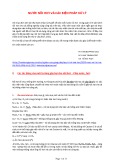

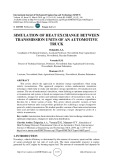
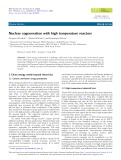
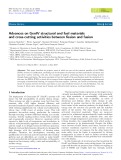










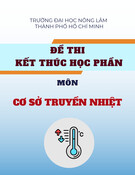
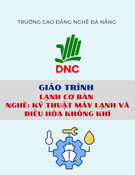
![Ngân hàng trắc nghiệm Kỹ thuật lạnh ứng dụng: Đề cương [chuẩn nhất]](https://cdn.tailieu.vn/images/document/thumbnail/2025/20251007/kimphuong1001/135x160/25391759827353.jpg)
